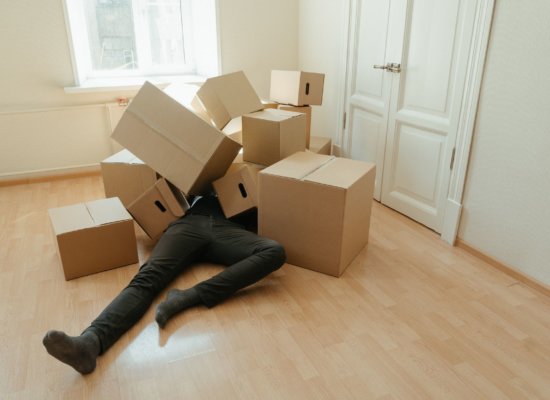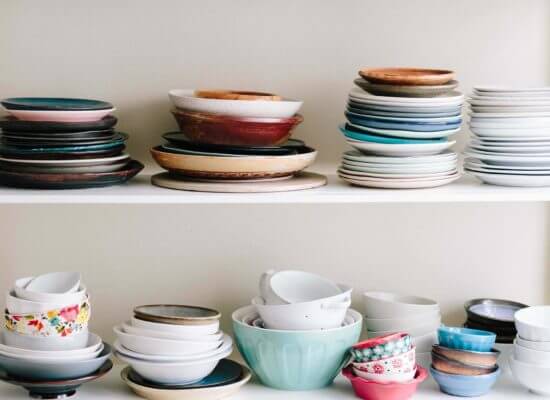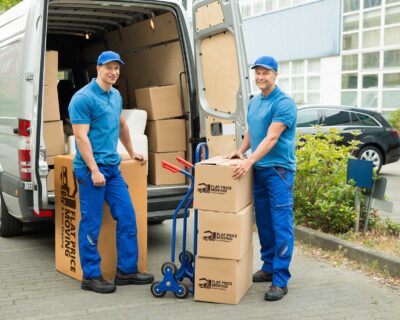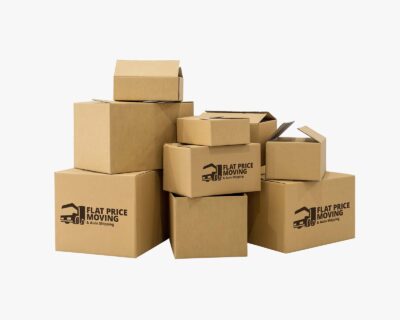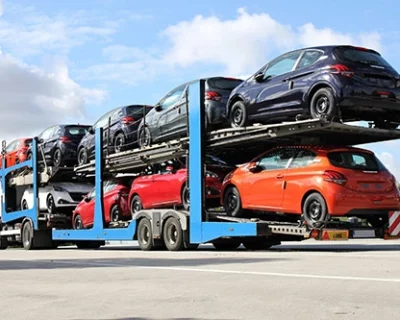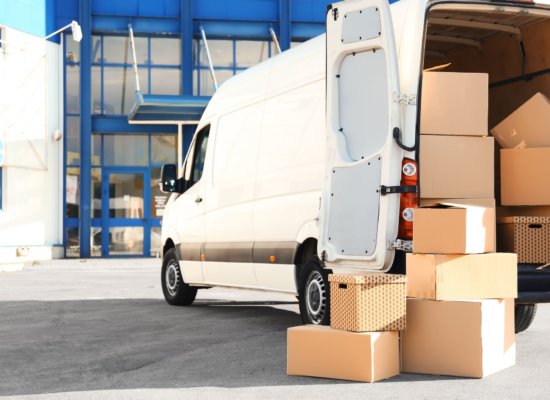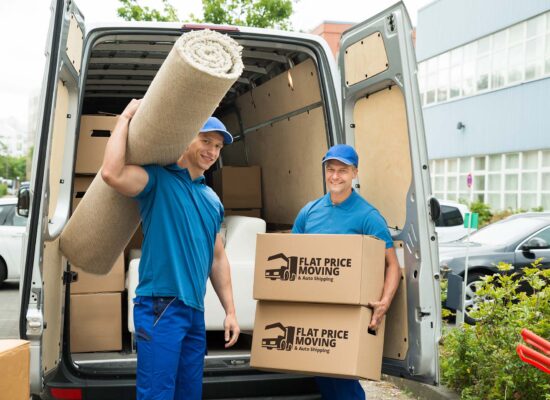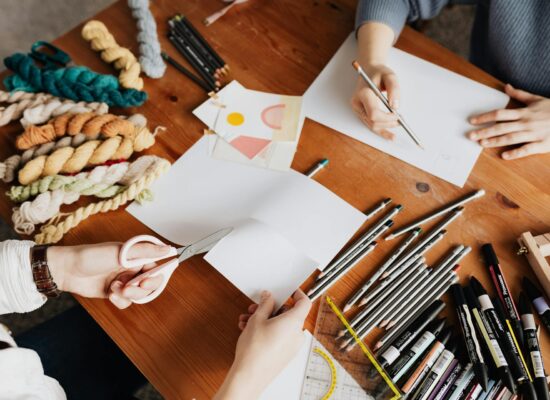Mastering the Art of Packing – The Best Way to Wrap Breakables for a Move
Mastering the art of packing is crucial, especially when it comes to safeguarding valuables. Learning the best way to wrap breakables for a move can be the difference between a stress-free relocation and a heartbreaking experience of damaged goods. Whether you’re doing it yourself or relying on a cross-country moving company, understanding the nuances of protective packing is key.
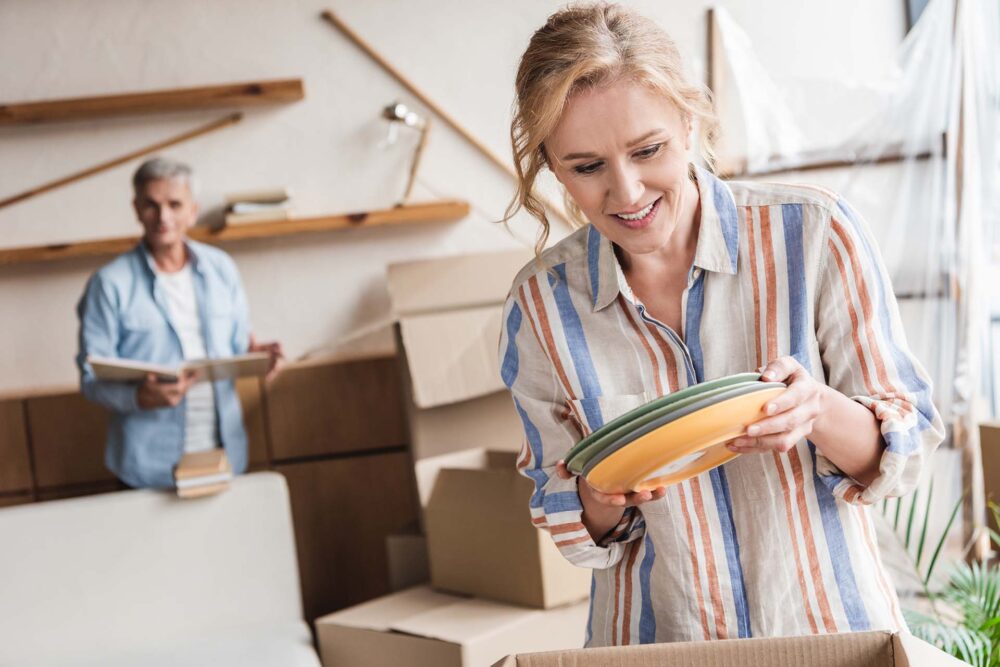
What are the most secure wrapping techniques for breakables? The best techniques involve a combination of sturdy materials and careful methods. Begin by using high-quality bubble wrap, wrapping each item individually with the bubbles facing inward for maximum cushioning. Secure the bubble wrap with packing tape. Next, fill any hollow spaces inside the items with crumpled packing paper or foam peanuts to prevent them from breaking down. For extra protection, wrap each bubble-wrapped item again with soft packing paper, creating additional layers of padding.
What Makes an Item Breakable?
An item is considered breakable primarily due to its material composition and inherent fragility, which make it susceptible to damage from impact, pressure, or harsh handling. Common examples in households include glassware, delicate china, art pieces, and various electronics, all of which require careful handling.
The materials of these items, such as glass, porcelain, or sensitive electronic components, are prone to cracking, scratching, or breaking even under minor strains.
The value of these items, whether monetary, sentimental, or both, further categorizes them as breakable. Most shattered materials end up in landfills as waste since some cannot be reused.
When people, during a long-distance move, opt for the easiest way to pack, they don’t employ any extra wrapping techniques to secure fragile items. Therefore, during last-minute relocation chaos, it’s not uncommon to hear glass shattering.
Start Gathering Necessary Materials
For safely packaging breakables, essential packaging materials include bubble wrap for cushioning, packing paper for wrapping, foam peanuts for filling box gaps, sturdy boxes for secure containment, and strong packing tape for sealing.
The right material choice depends on the item’s fragility and weight. Heavier items require thicker bubble wrap and stronger boxes. For budget-friendly options, consider sourcing second-hand packing supplies from websites like Craigslist. Proper materials are key to ensuring your valuables remain intact during the move.
The Next Step Is Pre-packing Preparation
Pre-packaging preparation is a crucial step in ensuring the safety of your breakable items during a move. Proper preparation not only simplifies the packaging process but also contributes to a more organized and efficient relocation. Here are key steps to prepare your breakables:
- Inventory assessment – Catalog breakable items. This helps in understanding what materials are needed and aids in downsizing for the move if necessary.
- Cleaning – Gently clean each item before packaging. This is part of the move-out cleaning process, ensuring that all items are ready to be used immediately upon arrival.
- Repair or secure loose parts – Check for any loose components or parts that may need securing or repair.
- Downsizing decisions – If downsizing for the move, decide which breakables to keep, donate, or discard. This reduces the volume of items to pack and transport.
- Updating relocation to-do list – Add specific packaging tasks and deadlines to the relocation to-do list to stay organized and ensure nothing is overlooked.
The Best Way to Wrap Breakables – Employ Different Techniques for Different Items
To pack efficiently, wrap each delicate possession with a method tailored to its specific needs, ensuring they move safely. Different types of belongings require unique approaches. For instance, items with irregular shapes or fragile exteriors necessitate more cushioning and careful handling.
Utilize materials like bubble wrap, packing paper, and foam peanuts strategically, adapting the wrapping technique to the shape, size, and material of each belonging. This personalized approach guarantees the best protection for every delicate possession during transportation.
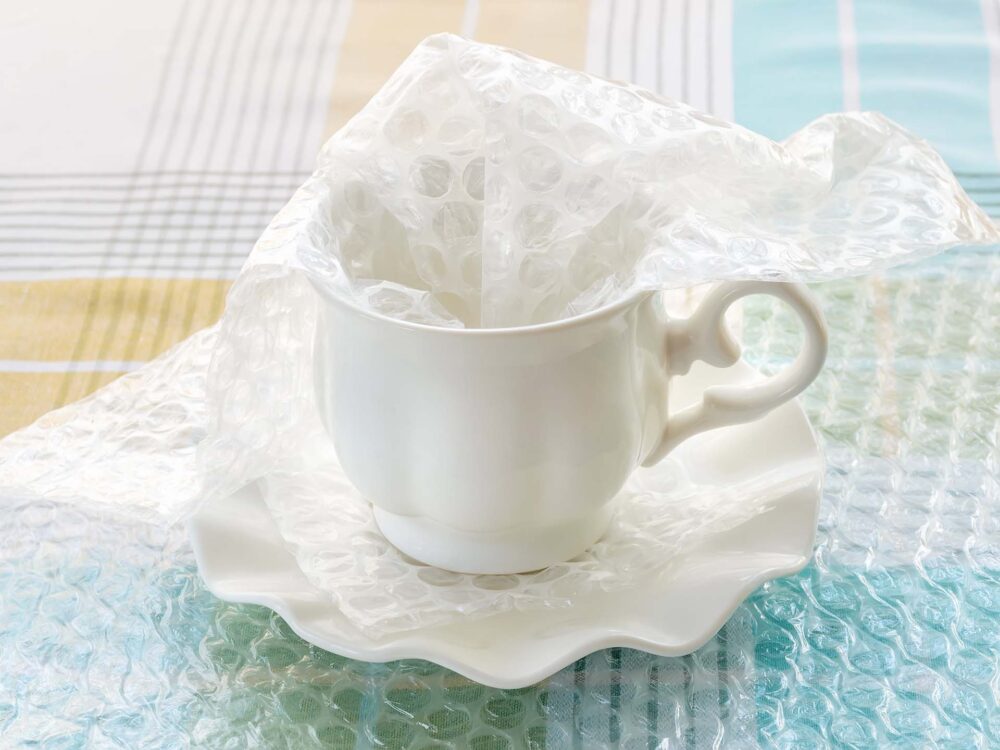
How to Handle Glassware and China
When preparing to pack glasses or the contents of a china cabinet, individual wrapping is key. Start by laying each piece of glassware or china on soft paper, then wrap it securely, tucking in the edges. For extra protection, add a second layer with bubble wrap, ensuring corners and handles are well padded.
In the box, layer the bottom with foam peanuts or crumpled paper for cushioning. Place the heaviest items at the bottom, adding more cushioning between layers. Fill any remaining space with materials to prevent movement and vibrations during transport.
Best Techniques for Wrapping Fragile Electronics
To pack electronics, special considerations are necessary to prevent damage. Begin by removing any batteries or detachable cords. Wrap cords separately and label them for easy reassembly. Use anti-static bubble wrap or foam to wrap electronics, as this prevents static electricity that can damage internal components.
If possible, pack electronics in their original boxes, which are designed for their specific dimensions and protection. If the original packaging isn’t available, choose a box slightly larger than the electronic device and fill the extra space with cushioning materials to prevent shifting.
What to Do With Artwork and Mirrors
Wrapping framed items and canvases demands a careful approach. For artwork and mirrors, start by taping an ‘X’ across the glass with painter’s tape to prevent shattering. Wrap the piece in packaging paper, followed by bubble wrap, paying extra attention to corners and edges. Use cardboard corner protectors for additional safety.
For larger, more valuable, or extremely delicate pieces, consider hiring long-distance movers specialized in handling artwork. Their expertise ensures these items are handled correctly and arrive at the destination without damage. Their specialized materials and techniques are particularly beneficial for irreplaceable or high-value pieces.
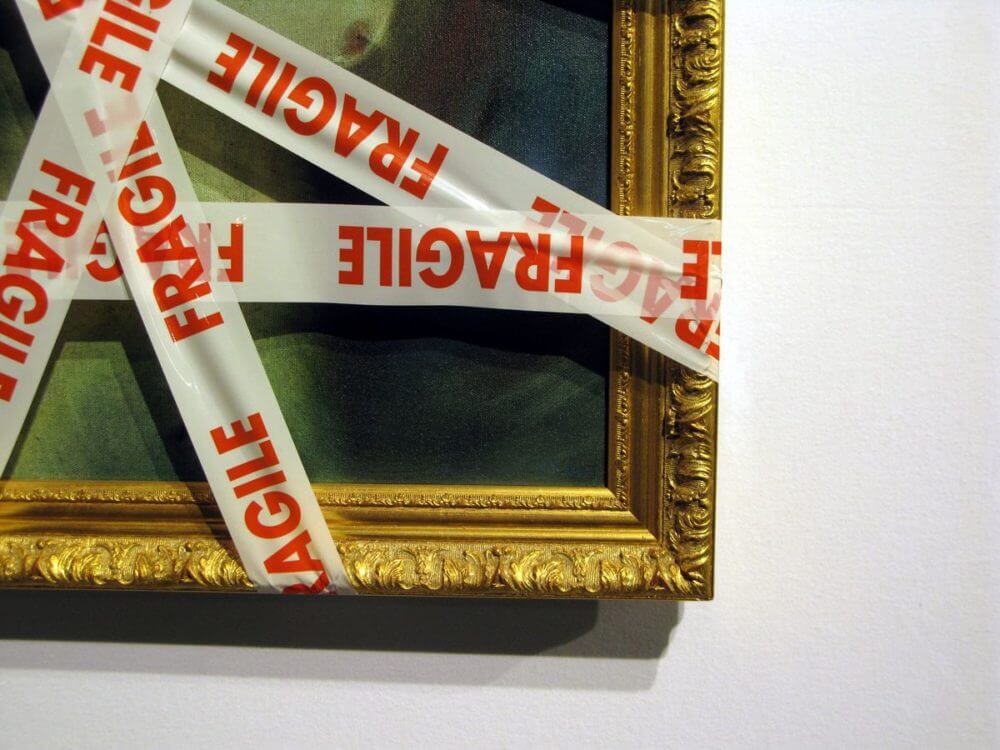
Packing and Box Filling Strategies
Effective packing and box-filling strategies are essential for ensuring the safety of your belongings during transit. When arranging wrapped items in boxes, start by placing the heaviest at the bottom and the lighter ones on top. This not only maximizes protection but also maintains the box’s balance.
Filling voids in the box is crucial to prevent movement and enhance shock absorption. Use materials like crumpled packing paper or foam peanuts to fill these spaces, ensuring that the contents are snug but not compressed.
This technique is particularly important to keep in mind when considering packaging tips for moving, as it aids in the stability of the contents, making them easier to unpack after the relocation. The goal is to secure the contents firmly enough to avoid shifting but without adding unnecessary pressure that could cause damage.
Bear in Mind That Overfilling the Box is a Huge Mistake
When filling boxes, it’s important to avoid overfilling, as this is a common relocation mistake that can lead to damage and handling difficulties. Overfilled boxes are not only hard to close and seal properly but also become too heavy, increasing the risk of dropping or contents bursting out during handling. To prevent this, always test the weight of the box as you fill it, ensuring it remains manageable.
If a box feels too heavy, redistribute the contents into another box. Properly balanced boxes are easier to carry and stack, reducing the risk of injury and damage. Remember, it’s better to use more boxes with manageable weights than fewer overfilled ones. This approach ensures a safer and more efficient moving process.
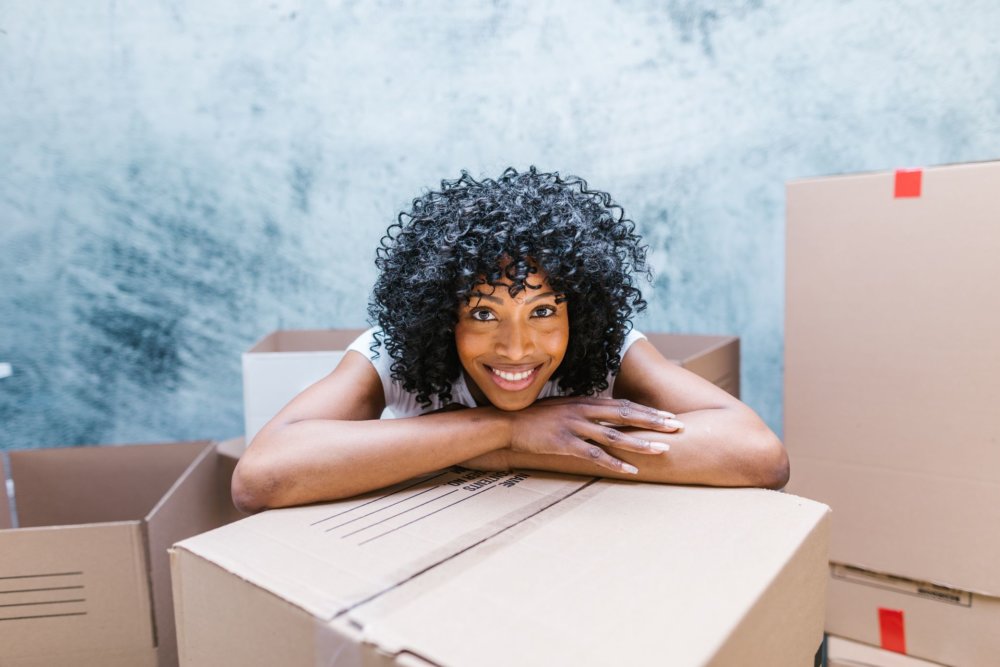
Labeling and Inventory Management
Labeling and inventory management are key aspects of a smooth relocation process, especially when handling breakables. Marking boxes as “fragile” alerts everyone involved to handle these boxes with extra care. This is crucial in preventing damage during loading, transit, and unloading.
For effective tracking and organization, maintaining a detailed inventory of breakables is essential. This inventory should list each item, its condition before moving, and the box it’s stored in. Utilizing a numbering system for the boxes and correlating them with the inventory can significantly streamline the unpacking process.
This method not only helps in quickly locating specific items but also in ensuring nothing is lost or overlooked. Keeping a well-documented inventory is a vital step to preparing for moves, providing peace of mind that all valued possessions are accounted for.
What is the Absolute Best Labeling System?
The absolute best labeling system for a move utilizes a combination of clear, descriptive labels and a color-coding system. Each box should be labeled with detailed contents and the room it belongs to.
Using relocation labels with different colors for different rooms (e.g., blue for the kitchen and green for the living room) can further simplify the sorting and unpacking process. Also, incorporating a numbering system (like “Box 1 of 5”) helps keep track of the total number of boxes per room, ensuring none are misplaced.
For items that are particularly delicate or valuable, adding a special symbol or note on the relocation label can draw attention to the need for extra care. This organized approach not only keeps track of belongings but also speeds up the unpacking process, reducing relocation stress and confusion during the relocation.
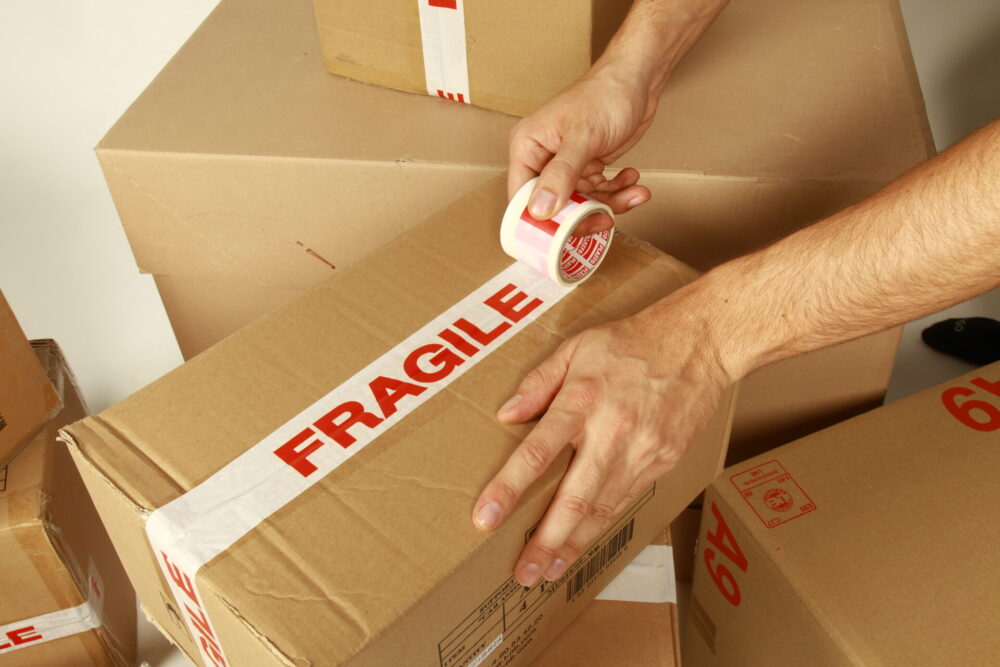
Hire Expert Long-Distance Movers to Wrap Everything Instead of You
When moving delicate items over long distances, hiring a professional long-distance moving company and utilizing their long-distance moving services as well as packing services can be a wise decision. These experts are trained in the art of securely wrapping and handling fragile items, ensuring they survive the journey intact.
The service provided by a long-distance moving company often extends beyond just wrapping and handling. They understand the nuances of long-haul transport and how to safeguard items against the challenges posed by extended travel times and changing conditions. Opting for professional help can provide peace of mind, knowing that your valued possessions are in capable hands.
How to Hire a Reputable Cross-Country Moving Company and Avoid Scammers?
Hiring a reputable cross-country moving and car shipping company requires careful research to ensure legitimacy and avoid scammers. Check their credentials, such as a valid USDOT number, which is a license issued by the United States Department of Transportation. Look for reviews and testimonials from previous customers to gauge their reliability and service quality.
Beware of any moving and auto transport company that provides unusually low estimates or demands large deposits upfront, as these can be red flags for fraudulent operations. Ask for references and proof of insurance to ensure they are capable of handling and protecting belongings. Additional information about the company’s license is on the FMCSA website.
Moving Services
Whether you are moving from New York to Los Angeles or from San Francisco to Chicago, we can help you.
Read morePacking Services
Our moving teams are trained to pack your belongings in the most efficient manner possible.
Read moreAuto-Transport
If your first concern is having your vehicle transported safely and efficiently, enclose shipping is the way to go.
Read moreReady for a Relocation Free From Common Mishaps? Reach Out to the Best Company
Embarking on a move can be a daunting task, but with Flat Price Auto Transport and Moving, you can experience a relocation free from common mishaps. Our expertise in handling delicate items, comprehensive long-distance moving services, and robust packing and box-filling strategies ensure your belongings are transported safely. Our proven labeling and inventory management systems keep everything organized, making unpacking after the move a breeze. Contact us today, and let us turn your moving journey into a seamless adventure.
FAQ
What Is the Best Storage for Breakables?
Ideally, use hard-sided boxes with reinforced corners for structural integrity, especially for long-term storage or during transit. Within these boxes, each breakable item should be individually wrapped in soft paper followed by bubble wrap for cushioning. For extra protection, line the boxes with foam padding or additional bubble wrap.
How Do You Pack Fragile Statues?
Start by wrapping the statue in acid-free tissue paper to protect its surface. Then, cover it with a layer of bubble wrap, ensuring all parts, including protrusions, are well protected. For statues with delicate or protruding parts, consider using foam padding cut to shape for additional protection. Once wrapped, place the statue in a box that is slightly larger than the statue itself.
What Do You Wrap Breakables in When Moving?
When moving breakables, the most effective materials for wrapping are bubble wrap and packing paper. Begin by wrapping each item in packing paper, which provides a soft layer to protect the surface from scratches.
Follow this with bubble wrap for cushioning and shock absorption, ensuring all sides, edges, and corners are covered. For additional security, use tape to keep the bubble wrap in place.
How Do You Wrap Delicate Figurines?
Lightly wrap each figurine in acid-free tissue paper to protect the paint or finish. Next, add a layer of bubble wrap, taking care to cover the entire figurine, including any protruding parts. Use small pieces of bubble wrap or foam for additional padding around particularly fragile areas, such as limbs or thin details.
Secure the bubble wrap with a small amount of tape, ensuring it’s snug but not too tight. For transportation, place the wrapped figurines in a sturdy box with a layer of cushioning material at the bottom.
